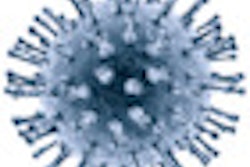A biopsy-based approach can improve the diagnosis of burning mouth syndrome (BMS), according to a study in the Clinical Journal of Pain (July/August 2010, Vol. 26:6, pp. 528-532).
Researchers from the National Neurological Institute Carlo Besta in Milan screened 98 patients who had complained of oral burning pain for at least six months. Forty-two patients were excluded after screening for contact sensitivity to dental materials, food allergies, tongue injuries, malignancies, connective tissue and metabolic disorders, oral infectious diseases, vitamin deficiencies, and other systemic diseases known to cause neuropathy.
Fifty-six patients underwent neurologic examination and assessment of pain intensity, depression, anxiety, quality of sleep, and quality of life. Tongue biopsy with the quantification of epithelial nerve fibers was performed in 51 patients.
When compared with nine healthy participants, the researchers found that epithelial innervation density was significantly reduced in 38 patients (p < 0.0001) and normal in 13 patients. Clinical features differed in the two groups as well: Patients with reduced epithelial nerve fiber density complained of pain in the whole tongue, lips, hard palate, and alveolar ridges and reported dysgeusia and xerostomia in 29% of cases (p < 0.001), while patients with normal innervation complained of pain on the tip of the tongue and reported dysgeusia and xerostomia in only 7.7% of cases.
"Our study shows that BMS can present with two distinct clinical pictures and that tongue biopsy can contribute to the assessment of the diagnosis," the researchers wrote.
In addition, mood disorders occur frequently and should be considered when approaching patients and treatment options.
"These observations could help physicians in identifying patients with BMS and addressing them with the appropriate diagnostic workup and treatment," they concluded.
Copyright © 2010 DrBicuspid.com



















